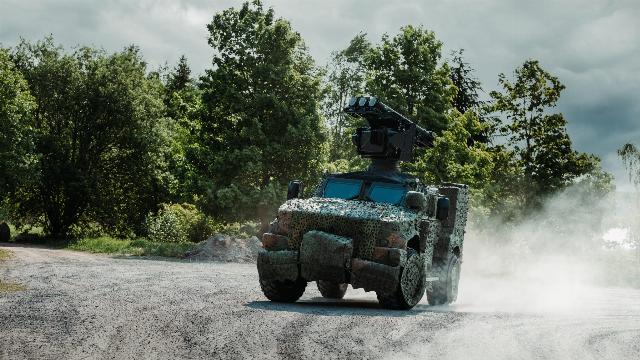On July 8, 2024, the Lithuanian Ministry of National Defense announced the signing of a contract with the Swedish Saab AB group for the supply of new MSHORAD (Mobile Short Range Air Defense) self-propelled short-range anti-aircraft missile systems to the Lithuanian armed forces. The contract value is about 1.3 billion Swedish kronor (147 million euros). The quantitative parameters of the contract were not disclosed, the delivery of the complexes is scheduled for 2025-2027.

A combat vehicle of the Saab MSHORAD (Mobile Short Range Air Defense) short-range self-propelled anti-aircraft missile system with an RBS-70 NG combat module with Bolide anti-aircraft guided missiles based on the American Oshkosh JLTV (4x4) light armored vehicle. The machine is equipped with a Saab Barracuda (c) Saab AB camouflage kit
Lithuania became the first known customer of the MSHORAD air defense system, promoted by Saab on the market for some time. The complex is a three-shot automated combat module of the RBS-70 NG SAM with Bolide anti-aircraft guided missiles (firing range "more than 9 km") with a laser beam guidance system installed on any self-propelled base. Lithuania will be supplied with a variant of the complex, made on the basis of the American Oshkosh JLTV (4x4) light armored vehicle. For detection and targeting, the MSHORAD group of combat vehicles includes the Saab Giraffe 1X radar, all elements are combined with the Saab GBAD C2 network air defense automated control system. It is claimed that the Giraffe 1X radar is optimized for detecting small non-high-speed UAVs and is capable of detecting UAVs "smaller than a liter tetrapak package of milk" at a distance of 4 km.
Lithuania is currently the largest customer of JLTV machines outside the United States, having received them since 2021 and contracted 500 units to date. Lithuania has also been an operator of various variants of the portable and portable Saab RBS-70 air defense system since 2004.

A combat vehicle of the Saab MSHORAD (Mobile Short Range Air Defense) short-range self-propelled anti-aircraft missile system with an RBS-70 NG combat module with Bolide anti-aircraft guided missiles based on the American Oshkosh JLTV (4x4) light armored vehicle. The machine is equipped with a Saab Barracuda (c) Saab AB camouflage kit
Promotional video (from) Saab AB :
